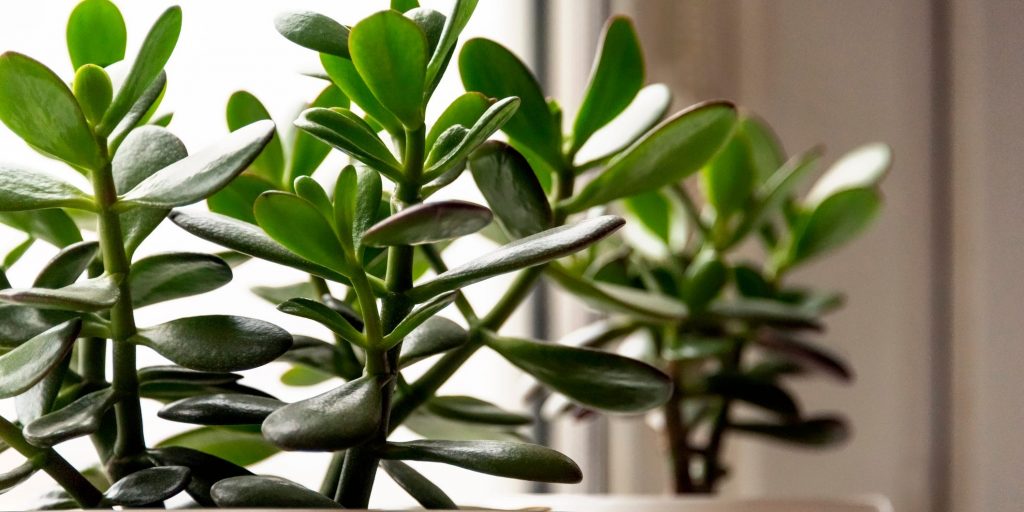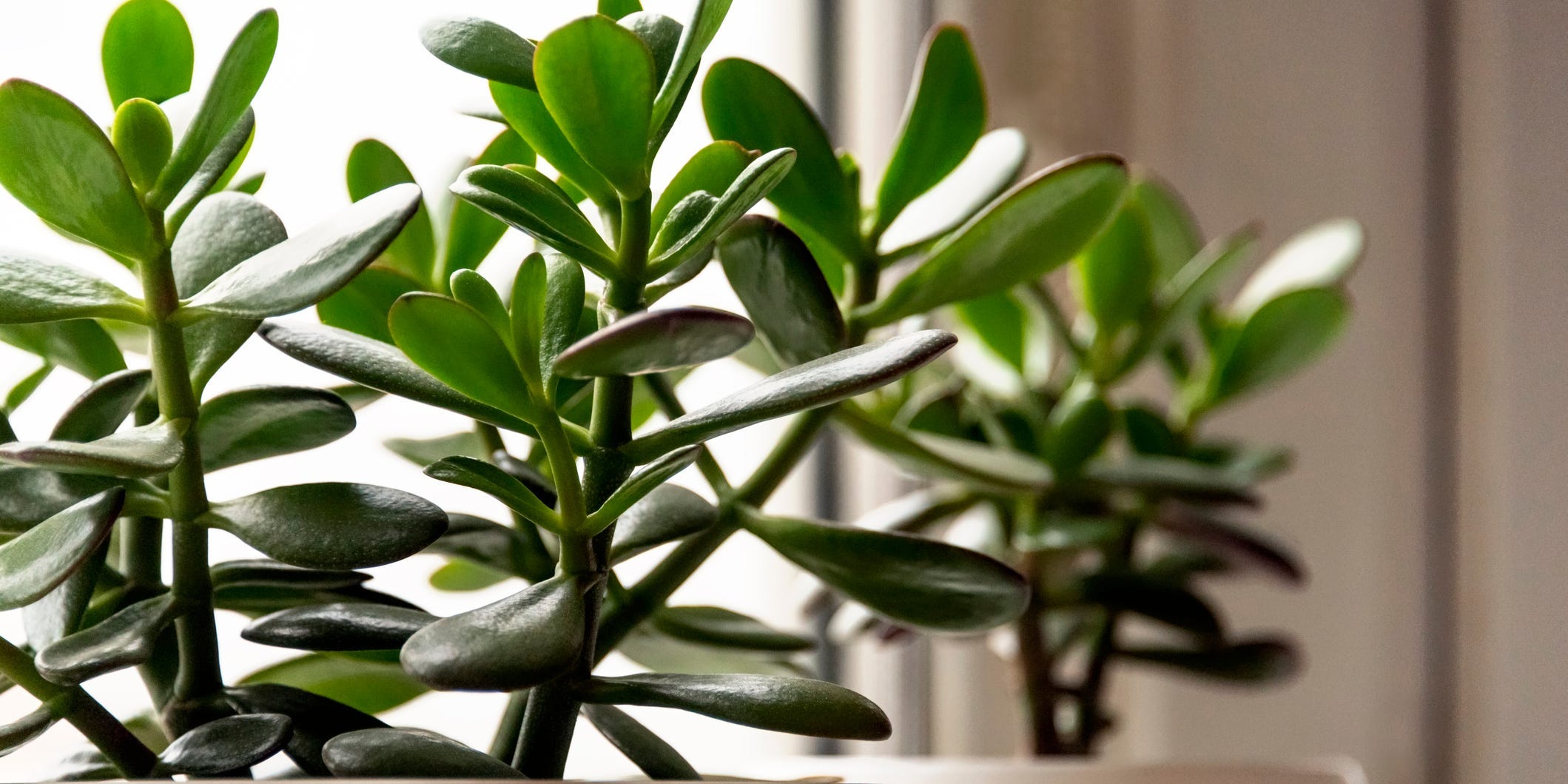
Andrey Nikitin/Getty Images
- Jade plants are the preferred beginner plant for bonsai enthusiasts and are considered lucky in feng shui.
- Jade plants are succulents, which makes them hardy and quite easy to care for.
- LIke their natural habitat, jade plants prefer bright direct light and warm temperatures.
- Visit Insider's Home & Kitchen Reference library for more stories.
The trusty, hardy jade plant is one of the most popular succulent houseplants. Native to South Africa and Mozambique, this enduring plant requires an infrequent watering schedule and, though they prefer direct light, they can tolerate low light conditions. Also known as the lucky plant, jade plants represent friendship and prosperity in countries throughout Asia.
Erin Marino, editorial lead and plant expert at The Sill, shares her best care tips on the beloved jade plant so you can maintain it as a good luck charm.
Identifying a jade plant
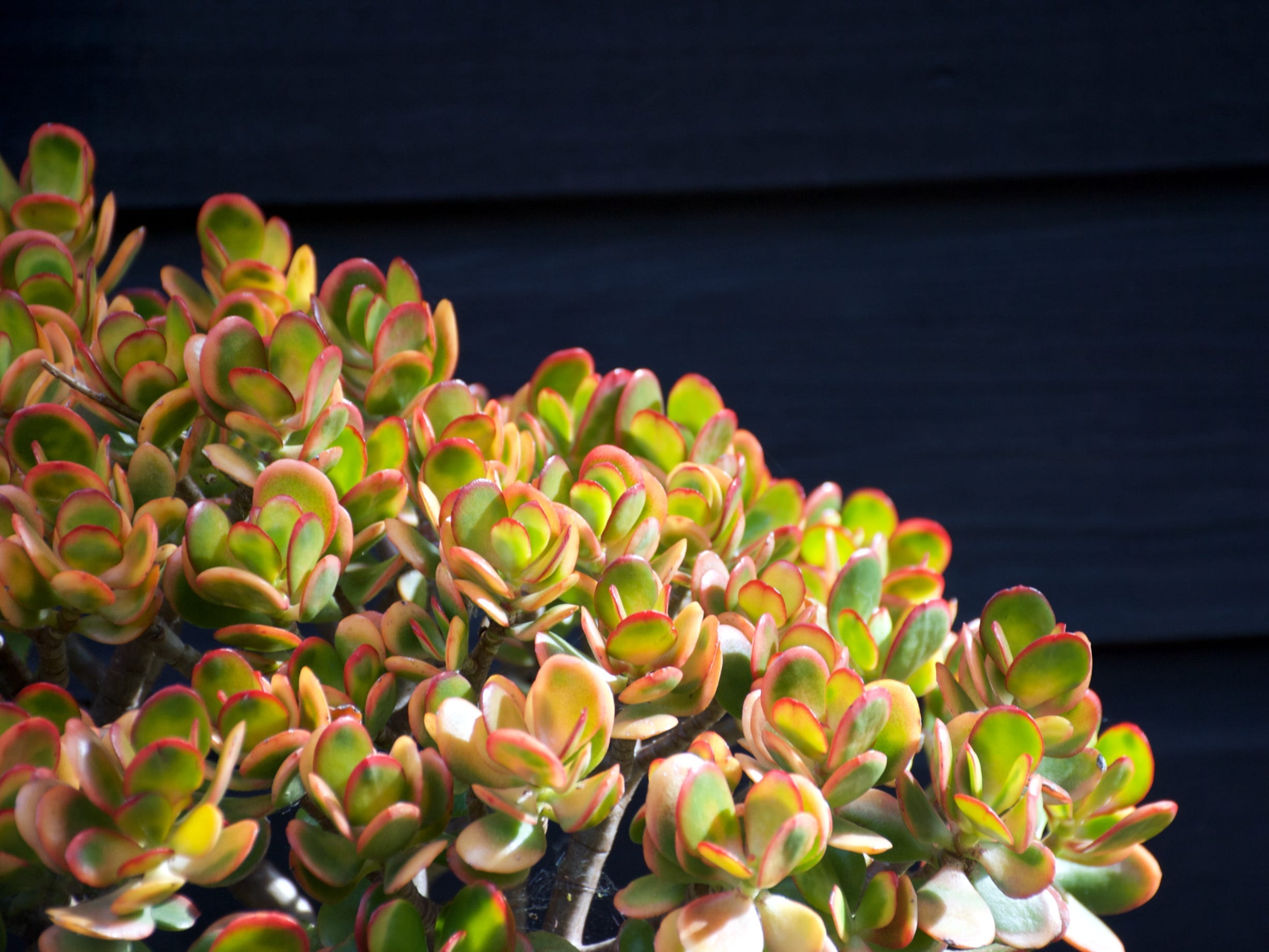
LazingBee/Getty Images
With thick stems and plump, shiny, and oval-shaped leaves, the charming jade plant has a mini tree-like appearance. There are dozens of jade plant varieties, but most are easily identified by their dark green leaves that can sometimes have a reddish hue.
"The word crassus in Latin means 'thick.' The name Crassula was given to this group of succulent plants because they have thick leaves and stems that store water," says Marino.
Jade plants also have bonsai capabilities, meaning they can take on a mini tree-like appearance and are the preferred beginner plant for bonsai tree enthusiasts. "Many bonsai beginners start with a jade plant since they are so hardy and can easily take on the shape of a bonsai tree when pruned correctly," says Marino.
Water
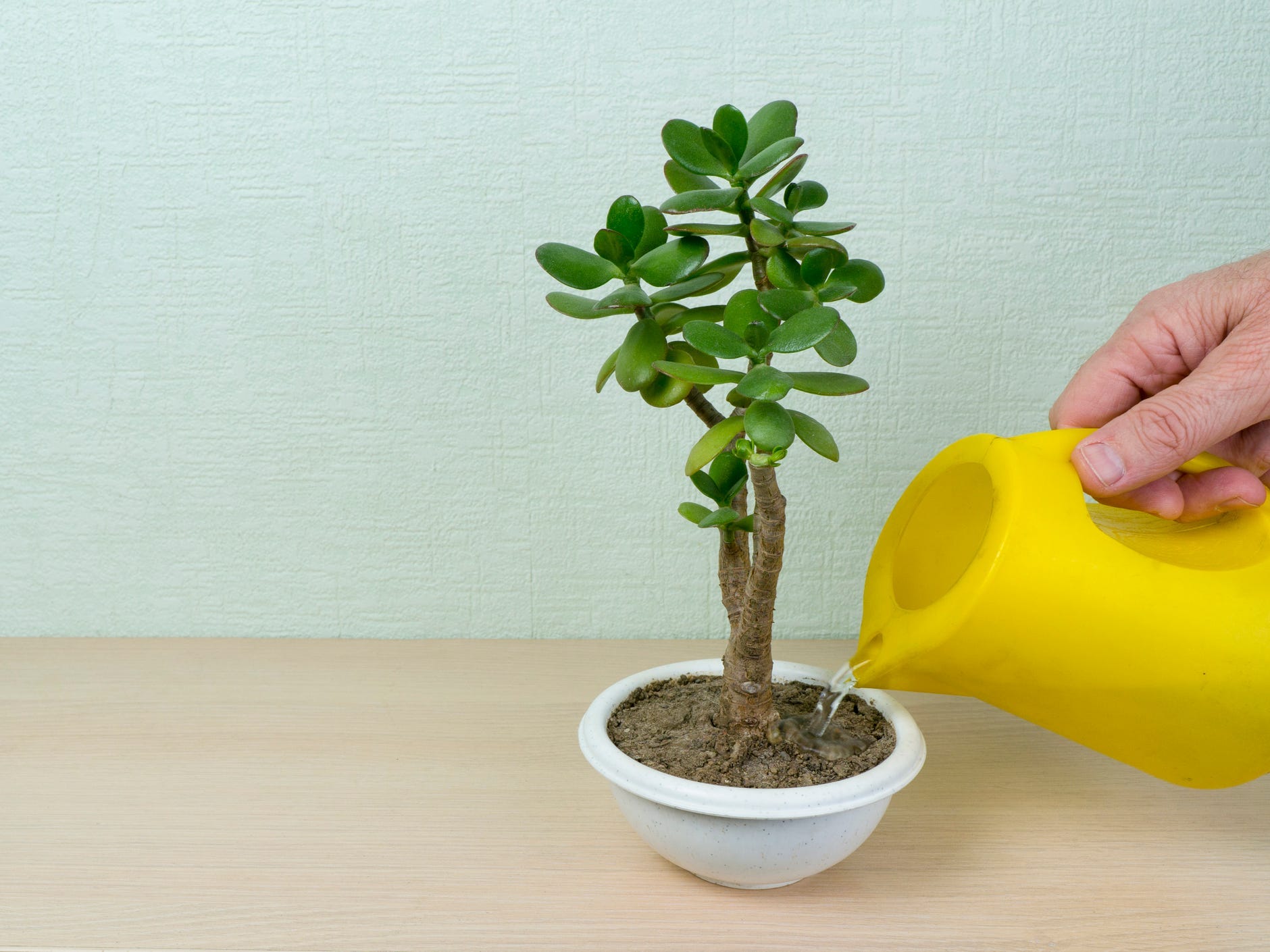
Melena-Nsk/Getty Images
As with all succulents, overwatering can be fatal and the jade plant is no exception. Marino recommends watering your jade plant only when the potting mix is completely dry. To check this, stick your finger in the soil - if soil sticks to your finger, do not water; if there is no soil, it's time for a drink.
"If you're nervous about overwatering, wait for your jade plant's leaves to wrinkle before watering again," says Marino. "This is a sign of thirst in fleshy, succulent plants."
Soil
Traditional potting soil mix will not work with jade plants or other succulents. These plants need a rocky soil or grainy soil that will allow for proper drainage and avoid root rot. Choosing a terra cotta pot for your jade plant will also retain some moisture so you can maintain the infrequent watering schedule that it prefers.
"Opt for a well-draining, sandy soil to pot your plant in, like a succulent mix," says Marino.
Light and temperature
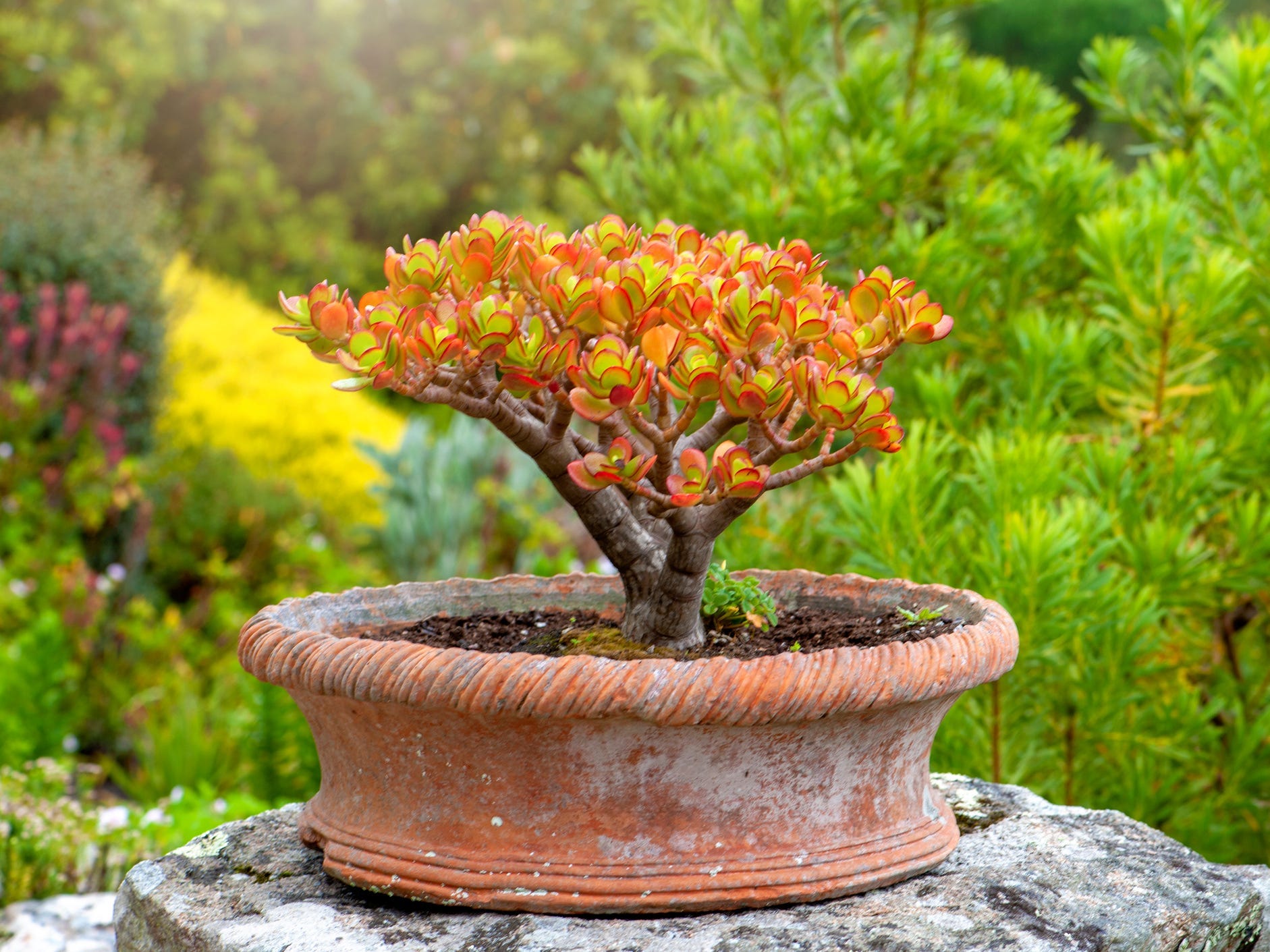
Jacky Parker Photography/Getty Images
Because jade plants originate from a warm, dry environment, it is best to replicate these conditions indoors as closely as possible for your jade plant to thrive. If your plant is getting enough sunlight, its leaves may reward you with beautiful red edges.
"Keep temperatures around 75 degrees Fahrenheit, and place in a spot where it receives bright direct light," says Marino. "If your space doesn't receive great natural light, position your jade plant under a grow light instead."
If you live in a colder area, Marino recommends bringing your jade plant indoors before temperatures dip below 45 degrees Fahrenheit.
Propagation
There are two ways to propagate a jade plant: leaf cutting and stem cutting. To propagate by leaf cutting, be sure to choose the healthiest leaf from a mature branch and gently remove it.
"Make sure to remove the stem of the leaf with it, which is where new roots and baby leaves will grow," says Marino. "Leave the leaf out in a dry spot until the bottom has scabbed over, then place on top of new potting soil and lightly mist it weekly."
A new baby jade will eventually grow from where the leaf was removed from the mother plant. Marino also suggests speeding up the propagation process by dipping that end in rooting hormone powder once scabbed over and before placing it on top of the soil.
To propagate by stem cutting, Marino says to use pruning shears to take a healthy stem cutting - a piece of the stem or branch of the plant - that is a few inches long and let it sit in a dry place until the bottom scabs over, then repeat the same steps as the leaf-cutting process.
Common problems
Like most houseplants, the jade plant can suffer from being overwatered and is also susceptible to common pests such as mealybugs and spider mites. To overcome this, Marino recommends a simple solution using household items.
"Spot-treat visible bugs with a cotton swab or cotton pad dipped in alcohol," says Marino. "Make sure to get all the nooks and crannies where these pests like to hide, and examine your plant weekly for signs of reinfestation."
Insider's takeaway
With enough bright direct light, warmth, the right potting soil, and an infrequent watering schedule, your jade plant can grow and thrive with the same strength and beauty as the trees it resembles.
